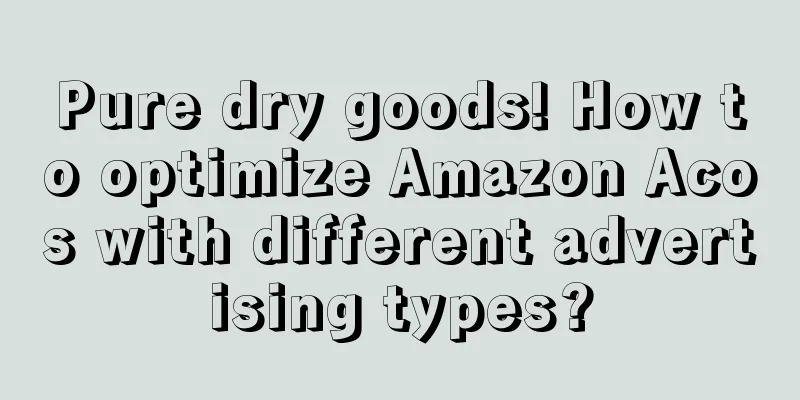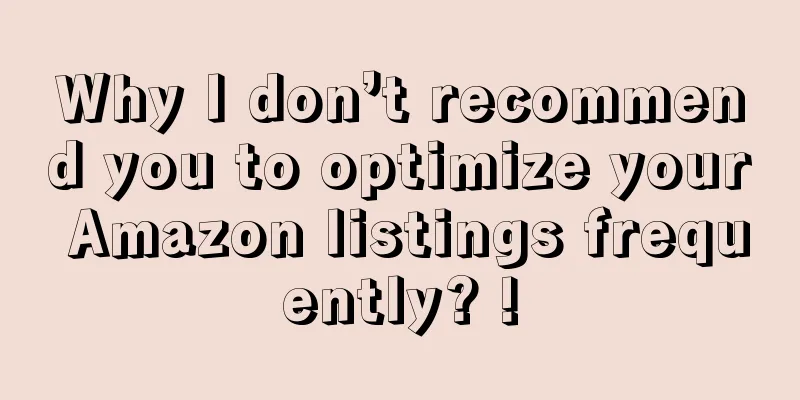This time, I will share with you some Amazon advertising skills.
The article of more than 1,000 words does not contain any nonsense. It is a highly condensed article of pure Amazon operational technology data and experience for reference and joint learning. Some newcomers may not understand it, but they can collect it and digest it gradually. I believe that they will understand it clearly in the future.
Before getting into the topic, let me share a little advertising tip~
Trick Cards
When filling in the bid, it is best to use an integer + 0.01.
If you want to bid $2, then fill in 2.01 or 2.1
The purpose of doing this is to consider it from the perspective of game theory. Think about it, most ordinary novice operators bid in integers. If you can bid 1% higher than most people, it will be easier for you to get greater exposure at a smaller gradient cost.
How to optimize Acos in a personalized and meticulous manner for different advertising types in Amazon operations (automatic advertising, manual advertising, product placement, etc.)?
Before talking about specific techniques, think about a question:
What is the purpose of the advertisement itself?
With all due respect, almost everyone will use advertising as a tool to directly place orders, but I personally think that advertising should have two purposes:
1. Directly increase orders
2. Increase natural conversions through high conversions of a specific keyword
Based on my understanding of advertising, I would like to talk about some basic techniques.
01. How to reduce the Acos of automatic advertising?
For automatic advertising, we cannot directly adjust the bids for certain keywords. We can only adjust the bids based on the type, or reduce them dynamically.
The only way to reduce the Acos of automatic advertising is to add continuous negative keywords.
Add negated method logic:
First of all, you need to clearly define a standard for valid data. The two data standards that need to be defined most are:
What is the minimum effective exposure?
What is the minimum effective click volume?
You can try to work it out theoretically:
Minimum effective exposure = 1/average conversion rate/average click-through rate
Minimum effective click volume = 1/average conversion rate
Assumptions: CTR 0.5%, conversion rate 5%
Minimum effective exposure = 1/5%/0.5% = 4000
Minimum effective clicks = 1/5% = 20
What does this data mean?
In fact, theoretically speaking, after a search term is displayed 4,000 times, there should be 1 order. If there is no order, it needs to be denied.
If a search term is displayed less than 4,000 times, but has 20 clicks but no orders, it also needs to be denied.
Ideas for dealing with special situations:
1. As for the search terms with less than 4000 and less than 20, my attitude is to give them some more time to develop. When there is not enough data, don't make decisions blindly, especially based on so-called intuition.
2. When the data is always below 4000 and below 20 search terms, and there are a large number of word groups, I personally recommend excluding them using the group probability model. The method is similar: first define the lowest exposure standard that you think can be judged, such as 1000. Select search terms with 1000-4000 exposures, arrange them in reverse order according to the click-through rate, and deny the last 20% of the low-click-through-rate words in these word groups every week.
This is thinking from the perspective of probability theory, and through the method of elimination at the end, the words with a high probability of being unreliable are first negated, allowing the words with a high probability to continue to be stored.
02. How to reduce manual advertising-keyword delivery Acos?
The idea behind keyword negation in manual advertising is the same as above.
But for manual keyword advertising, we can also introduce: constantly adding fresh keywords
Usually what I do is:
1. Download the weekly advertising report and filter out all keywords with 0 orders
2. Filter out keywords with about 2,000 impressions (I don’t think the effect will be seen if it is less than 2,000, so you can wait for a month and see)
3. Filter the conversion rates of the above keywords and filter out keywords with lower than average click-through rates (use the powerful table filtering function. If you are not familiar with tables, it is strongly recommended to go to Bilibili to learn the three core functions of table data, formulas, and icons)
4. Negate keywords with rates below the average.
Repeat the above steps every Wednesday, select the data from the previous week, repeat the operation, and after repeating for 2 weeks, compare the data from the last 2 weeks.
You will find that the data will obviously look better.
03. How to reduce the Acos of manual advertising-product delivery?
The idea of keyword negation for product placement is roughly the same, but what is negated are all specific ASINS rather than keywords, so the negation is very accurate and hits the mark.
There are actually many dimensions of advertising. We often discuss only the dimensions of keywords and competitors, but there are also dimensions of time and space. Data-driven operations are actually very simple. We’ll talk about this issue later.

